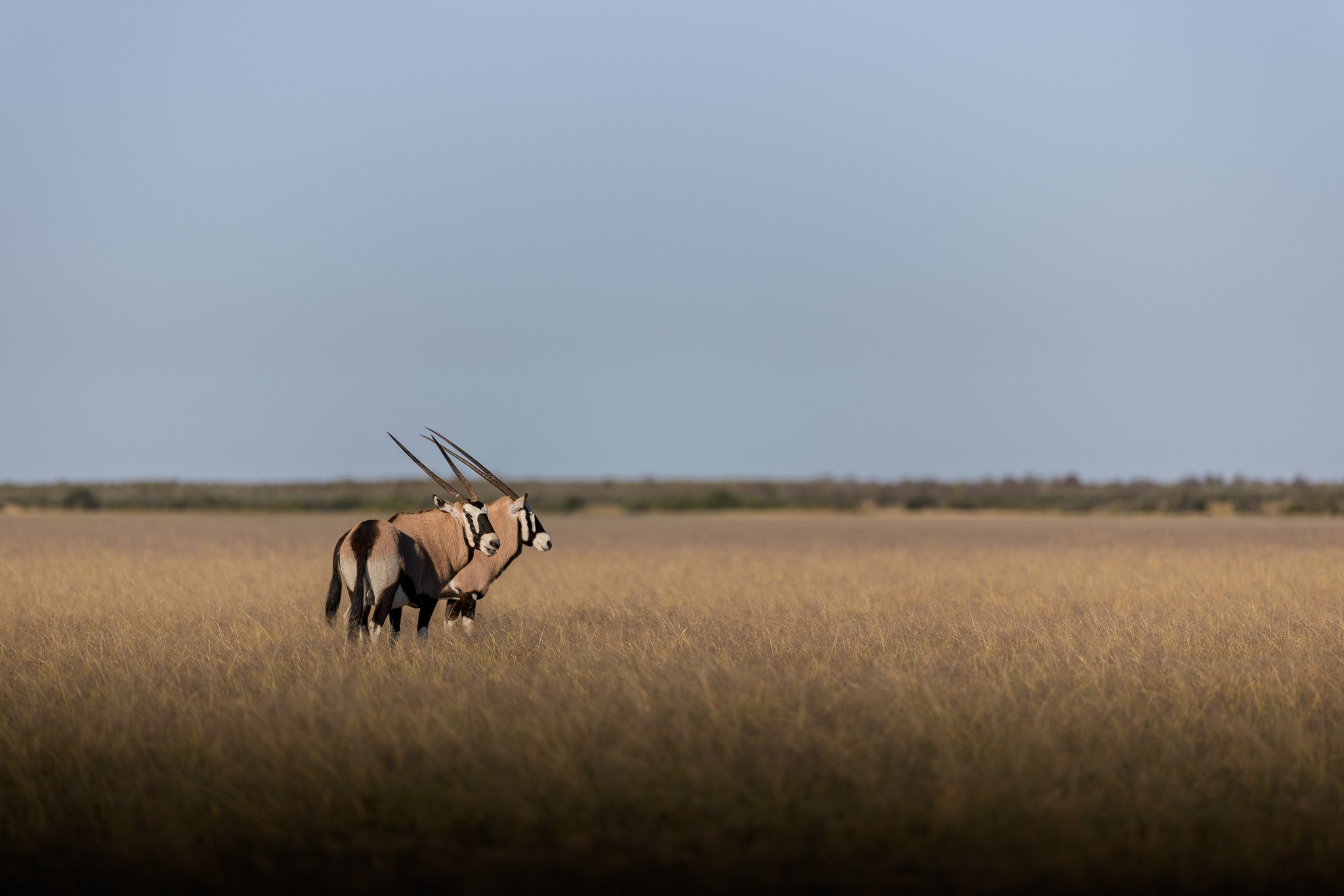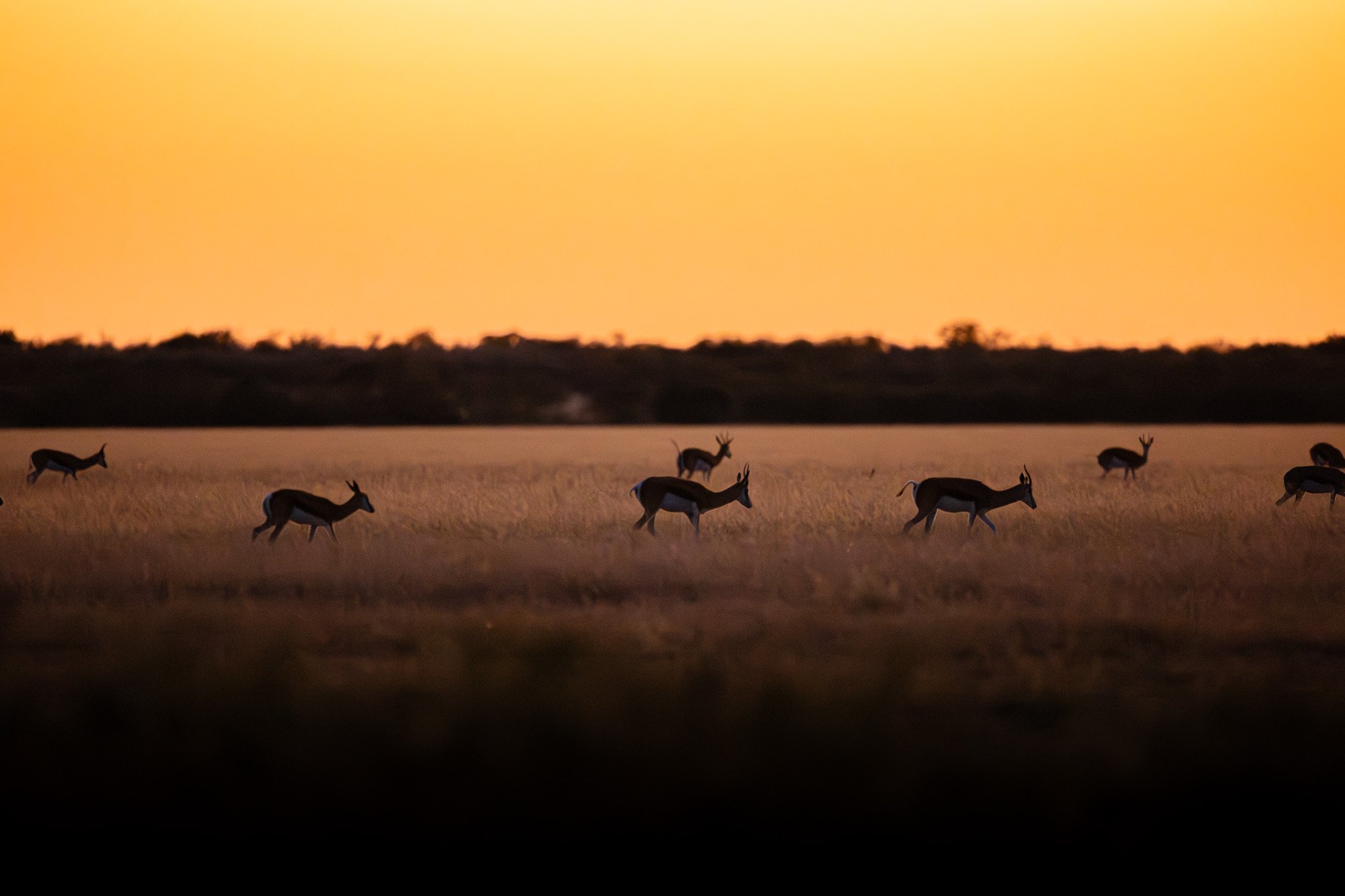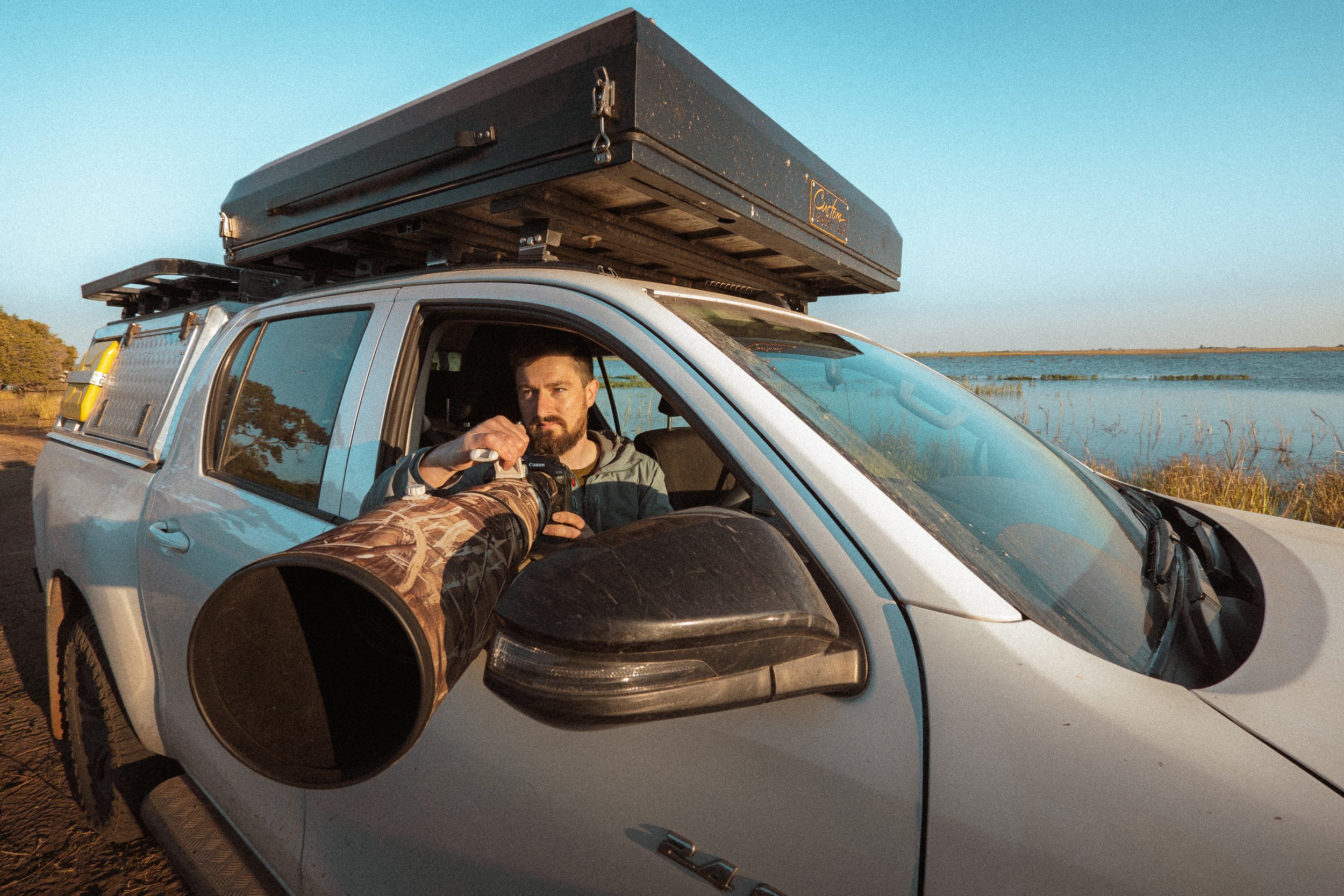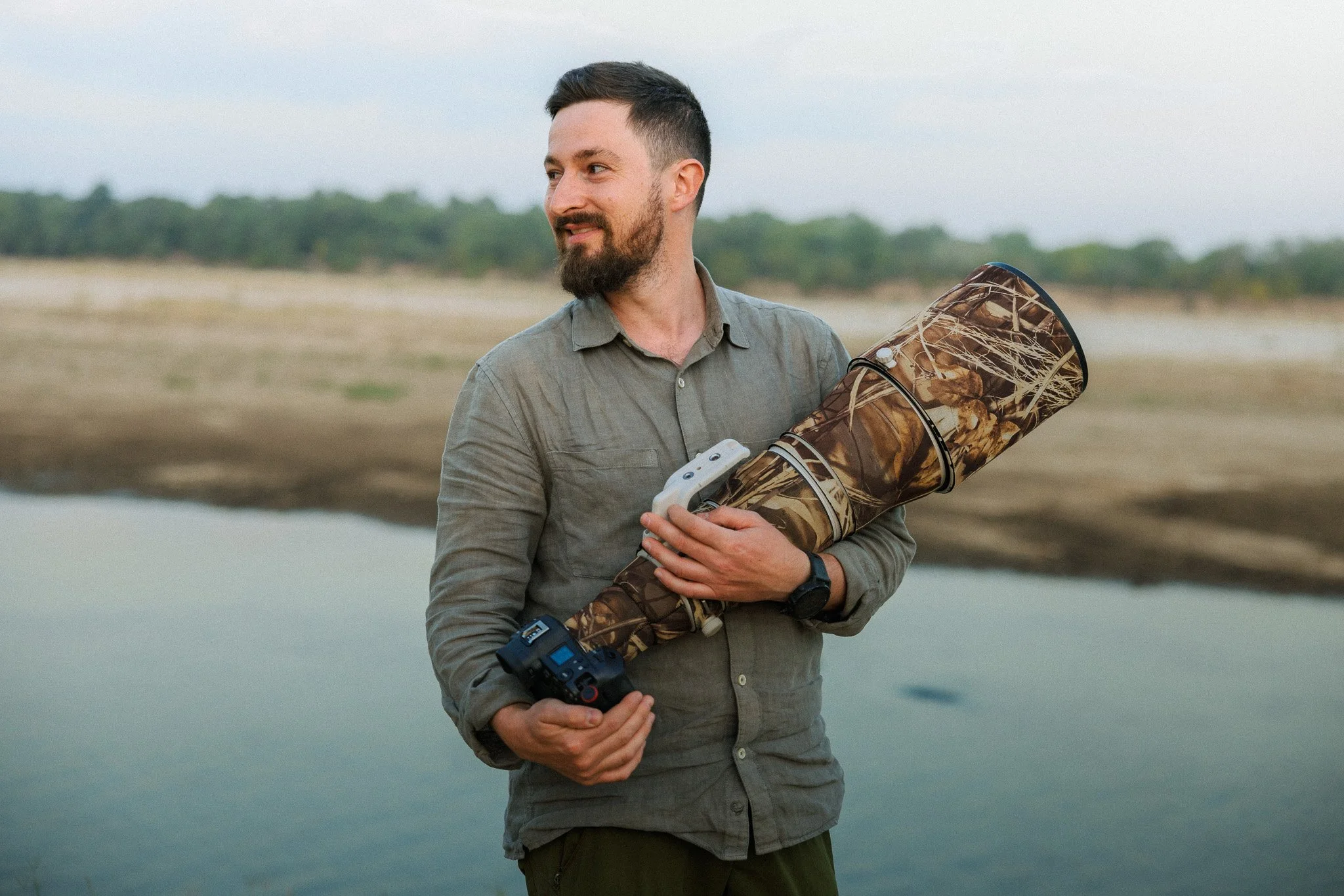I had big expectations.
Before heading into the Central Kalahari Game Reserve, I’d read countless posts, watched videos, and even chatted with fellow photographers who all said the same thing: this place is a hidden gem for big cat sightings. Lions basking on open pans, cheetahs chasing springbok in the golden grass. And this made sense—CKGR is massive, dry most of the year, and has limited waterholes. In theory, predators should be easier to spot than in greener parks.
But this year? This year had other plans.
The rains came heavy and late. By the time we arrived in May, water was everywhere. Every pan was dotted with glistening puddles. Grass grew tall and lush, swaying in the breeze like it was the Okavango. Animals were scattered, relaxed, hydrated. We found no predators. Not one. Just tracks and distant roars.
A lone orix near Piper Pan.
Hundreds of km of emptiness.
We heard lions almost every night. Roars that shook the stillness of the early hours, coming from somewhere behind the dunes. But we never saw them. Not a flash of fur. And I won’t lie: after ten days of early mornings, long drives, and hopeful tracking, it stung a little.
Still… it was beautiful.
If you’ve ever been in the Central Kalahari, you know what I mean. The silence hits differently out there. It’s not the absence of sound. It’s the presence of nature uninterrupted. No fences, no villages, no drone of traffic in the distance. Just wind, birds, the buzz of insects—and sometimes, nothing at all.
I remember one evening in particular. We had just set up camp near Piper Pan. The sun dropped low, painting the acacias in gold. I climbed on top of the truck, sat on a jerry can, and listened. Springbok grazed nearby. A kori bustard strutted past. And all I could think was—this is it. This is exactly what I came for, even if I didn’t know it.
Phokoje Pan.
📗 Want to improve your field skills before your next trip?
Orix in Piper Pan.
In those long, predator-less hours, I slowed down. I stopped rushing to the next sighting. Instead, I spent time just watching herds of gemsbok, oryx, and wildebeest go about their day. I started noticing tiny things: the way a springbok flicks its tail before sprinting, how oryx form a line when walking across open ground, how the golden light reflects in the eyes of a black-backed jackal.
Photography-wise, it was a shift. I stopped waiting for drama and leaned into detail. Played with backlight. Practiced slow panning to capture motion. Used wide angles to show scale. The place was too quiet for action, so I focused on mood.
Was it frustrating at times? Of course. There’s always that tension—especially when you know clients would ask, "Did you get lions?"
But I’ve come to believe these quiet trips matter just as much. They train your patience. Your eyes. Your respect for the wild. They remind you that you’re a guest, not a customer. The bush doesn’t owe you anything.
During this trip we’ve seen incredibly large herds of springbok and oryx.
📅 Thinking of joining a guided trip in 2026?
And honestly, had we seen a lion every day, I might have missed the magic of that silence. The joy of boiling water over a fire as the sky turned purple. The sound of a scops owl while you brush your teeth in the dark. The tracks in the morning sand.
Coming home empty-handed isn’t failure. It’s an invitation to go deeper.
Piper Pan waterhole.
I left the CKGR with memory cards full of oryx silhouettes, dust trails, moody landscapes, and quiet mornings. No predators—but somehow, more connection than I’d felt in a long time.
Would I go back? Absolutely. And maybe next time, I’ll bring back the lions too. But if not... I’ll still come back with something worth keeping.
















